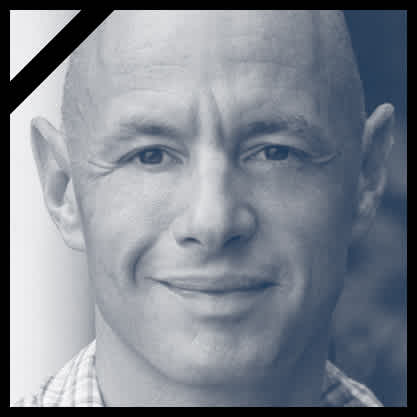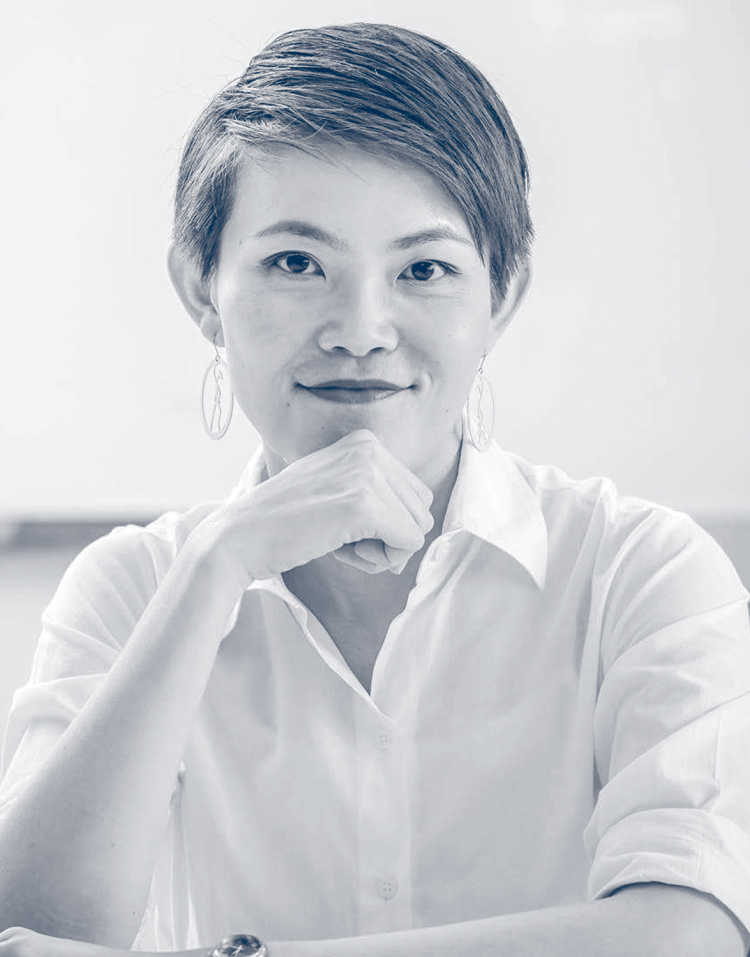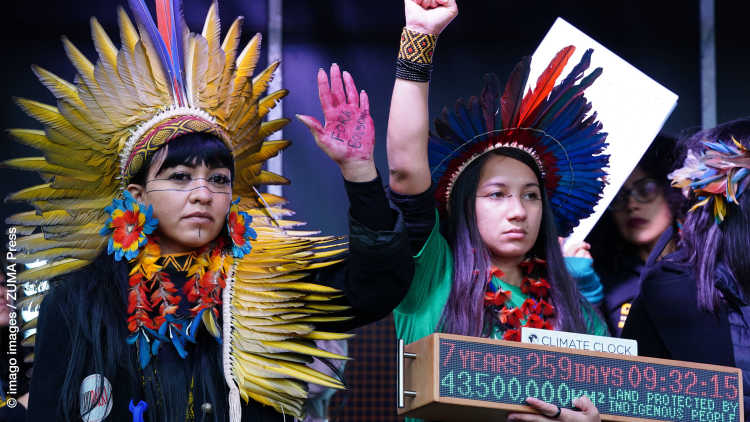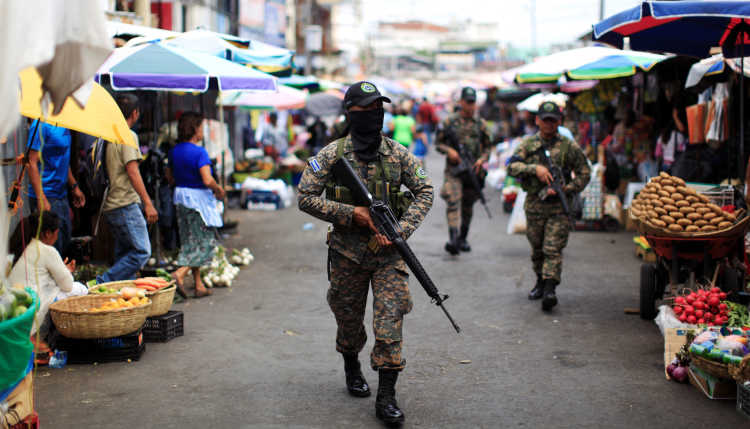- Startseite
- Publikationen
- GIGA Focus
- Police Violence Against Black People Is on the Rise in Brazil
GIGA Focus Lateinamerika
Anstieg der Polizeigewalt gegen Schwarze in Brasilien
Nummer 5 | 2020 | ISSN: 1862-3573
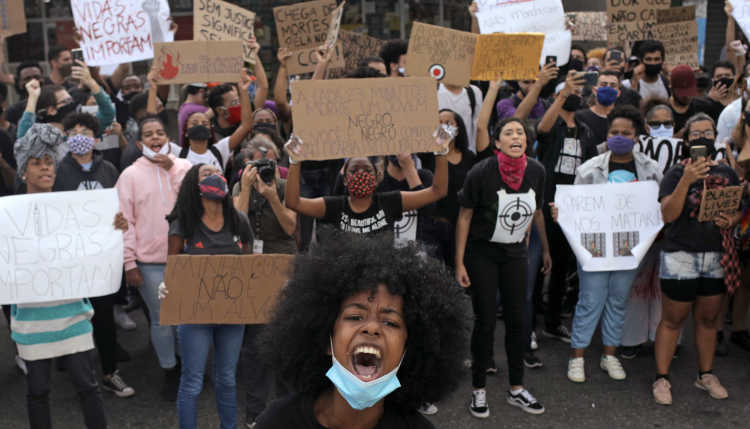
The death of George Floyd at the hands of the police in the United States has sparked the largest protests against police violence and racism since the 1960s. In numerous countries around the world people have taken to the streets in support of the protests in the US and to criticise police brutality in their own countries. Racism also persists in Brazil, where violence against Afro-Brazilians is on the rise.
Police brutality, by which Afro-Brazilians are particularly affected, is increasing alarmingly in Brazil. President Jair Bolsonaro and other extreme-right politicians are further encouraging police violence with tough-on-crime discourses and policies.
Lethal violence against Afro-Brazilians, in general, is intensifying: every 23 minutes a young Afro-Brazilian is killed. A death that reverberated internationally was the political murder of Marielle Franco in 2018, who was a Rio de Janeiro councilwoman and outspoken critic of police violence.
The Brazilian black movement has been mobilising against police violence and racism for over 40 years now. Activists denounce the systematic exclusion of blacks that makes them more prone to losing their lives and limits their opportunities to fully realise their social, economic, and political rights.
The black movement has achieved some progress over the last few decades with regards to anti-discrimination and equality policies. But the problem of violence and police brutality against blacks has never been tackled efficiently.
Policy Implications
The Brazilian government must implement a national programme to reduce the homicide rate, and federal and state authorities need to introduce measures to combat police violence. Also, public policies to fight racism and to promote the equality of Afro-Brazilians need to be advanced. The German government, the European Union, and other international actors should call on the Brazilian government to guarantee the human rights of Afro-Brazilians.
Police Violence Is Increasing
Brazil has seen a constant and alarming rise in police violence during the last years: in 2018, homicides at the hands of police officers increased by 19.6 per cent (Bueno et al. 2019: 59) and, in 2019, by 1.5 per cent. It is worldwide the country with the highest number of killings perpetrated by the police. In total, at least 5,804 people were killed by the police in 2019 – which means that over 10 per cent of all homicides were committed by the state’s security forces (Velasco, Grandin, and Reis 2020). Public-security experts agree that when the proportion of killings by the police in relation to overall homicides is over 10 per cent, it usually indicates the use of excessive force and extrajudicial executions (Bueno et al. 2019: 59). In fact, the use of excessive force and summary executions during police operations – referring to killings of suspected criminals without them being arrested and undergoing a due judicial process – are common in the “war on drugs” in Brazil (Amnesty International 2015).
Although police officers who have committed a homicide during operations have to register the death – which, according to the law, then has to be investigated in order to determine whether the death is covered by the “exclusion of illegality” as it, for instance, occurred in legitimate self-defence – these cases are, in effect, seldomly investigated, processed, and punished judicially. This lack of oversight by the criminal justice system creates impunity, and sends the message that the authorities turn a blind eye to extrajudicial killings (Amnesty International 2015). Large parts of Brazilian society as well seem to tolerate these deaths, as the popular saying that “a good criminal is a dead criminal” illustrates. President Jair Bolsonaro, who is currently not affiliated to any registered political party, and other far-right politicians – such as the state governor Wilson Witzel from the Social Christian Party (Partido Social Cristão, PSC) and several former police and military officers elected to Congress in 2018 – embraced this rhetoric in their electoral campaigns and further encourage police violence with their tough-on-crime discourses.
One of Bolsonaro’s presidential-campaign promises was the promotion of legislation to further extend the protection of public-security officers from potential legal repercussions for killings committed during operations. Since assuming the presidency, he has already proposed two bills aimed at changing the legislation in this regard. A proposal with this aspiration was also included in the “anti-crime package” presented by Bolsonaro’s former Justice Minister Sérgio Moro, but Congress ultimately excluded it from the new bill. Opposition politicians, experts, and human rights activists refer to these legislative proposals as “licences to kill,” and warn that, if sanctioned, they could further hamper investigations of deaths committed by public-security agents and aggravate police violence.
While having remained high overall and currently being on the rise again, homicide rates in Brazil decreased substantially in 2018 and 2019. Bolsonaro has attempted to claim these improvements to be the result of his tough-on-crime approach, but public-security experts argue that the decrease cannot be explained by any of the measures promoted by the current federal government. They, moreover, highlight that there is no correlation between a more violent police force and the reduction of homicides. In fact, in those Brazilian states in which police violence decreased overall homicide rates declined as well; in those states in which police violence increased meanwhile, the homicide rates intensified (Bueno et al. 2019: 60).
Violence Primarily Affects Afro-Brazilians
Afro-Brazilians, who have historically been discriminated against in Brazil, are particularly overrepresented among the victims of this police violence. While they represent approximately 55 per cent of the population, 75.4 per cent of those killed by the police in 2017 and 2018 were black (Bueno et al. 2019: 62). At 61.66 per cent, Afro-Brazilians are also overrepresented among the imprisoned population, which has gone up considerably over the last two decades (Depen 2019: 33).
Numerous studies reveal that in Brazil there is a differentiated treatment within the criminal justice system of citizens according to their ethno-racial appearance with regard to “the policing, the police investigation, the defence of the accused, the judicial judgement, [and] the execution of sentences” (Sinhoretto and Morais 2018: 16). Researchers argue that the fact that Afro-Brazilians die more at the hands of the police cannot simply be explained by their overrepresentation in marginalised neighbourhoods – where the most violent and deadly police operations are undertaken – or by police biases against low-income citizens. Several studies demonstrate that the Brazilian police are racially biased against blacks in the selection of suspects and the application of violence, and point to the existence of institutional racism in the police. Accordingly, racial discrimination by the Brazilian police is not a phenomenon constituted of random occurrences and racist assaults by individual officers, but rather a collective practice that has become part of the country’s police culture (Barros 2008).
Afro-Brazilians are not only disproportionally affected by police violence, but by violence in general – and violence against them is on the rise. Waiselfisz (2014a), based on official data from the Ministry of Health, for instance, shows that from 2001 to 2011 homicides of white Brazilians decreased by 53.4 per cent, while those of black Brazilians increased by 67.7 per cent (Waiselfisz 2014a: 120). Although the overall homicide rate changed little from 2001 to 2011, there was, thus, a profound change with regards to which ethnic groups are affected by violence; young Afro-Brazilians especially have increasingly been disproportionally affected. This data seems to indicate that the protection of young, white Brazilians improved during this period, while violence against young Afro-Brazilians intensified (Waiselfisz 2014a: 120, 122, 124).
More current data documents that blacks continue to be considerably more affected by increases in violence. In 2017, 75.5 per cent of all homicide victims were Afro-Brazilian. The homicide rate of blacks was, thus, 43.1 per 100,000 black Brazilians, while the equivalent figure was 16 per 100,000 among non-black Brazilians. This means that Afro-Brazilians are 2.7 times more likely to be killed than non-blacks (IPEA and FBSP 2019: 49). Commonly cited data in this regard reveals that on average 63 young Afro-Brazilians are murdered every day, meaning that every 23 minutes a young, black Brazilian is killed (Waiselfisz 2014b: 9). While black men are particularly overrepresented among the victims, black women are as well significantly more affected by violence and increases in violence than their white counterparts; this is true with regards to both femicide as well as to general homicide (IPEA and FBSP 2019: 38, 39).
In addition, Brazil is a dangerous place for human rights defenders. Many social activists denouncing police violence live in fear of threats and retaliation (Sinhoretto and Morais 2018: 22). A death that reverberated internationally was the political murder of Marielle Franco in 2018, who was an Afro-Brazilian human rights activist, a Rio de Janeiro councilwoman, and an outspoken critic of paramilitary groups and police violence. More than two years after the murder of Franco and her driver Anderson Gomes, the investigation of the case has still made little headway in uncovering who ordered the killings.
The Brazilian police system of investigation is known to be inadequately equipped and chronically overburdened. As a consequence, the number of crimes that are investigated and, especially, the number that are solved is extremely low (IPEA and FBSP 2019: 95). The Brazilian state, thus, not only contributes directly to the disproportionate killing of Afro-Brazilians via police violence, but also indirectly by its failure to effectively fight impunity, prevent and reduce criminality, and provide public security for all Brazilian citizens across different social and ethnic groups. Waiselfisz (2014a) speaks of “structuring violence,” in this regard referring to the existence of socially constructed boundaries in Brazil that determine who deserves protection and against whom violence may – or even should be – perpetrated by individuals and institutions (Waiselfisz 2014a: 137).
Resisting Police Violence and Racism: The Brazilian Black Movement
Fighting police violence has been one of the central objectives of the Brazilian black movement since its reorganisation during the phase of re-democratisation at the end of the military dictatorship in the late 1970s. A fundamental landmark in the movement’s reorganisation was a public protest event organised by the Unified Movement against Racial Discrimination (Movimento Unificado contra a Discriminação Racial) on the steps of the Municipal Theatre of São Paulo in July 1978, to denounce the murder of the market-seller Robson Silveira da Luz by police officers. Since then, throughout the different phases of democratisation in Brazil numerous further cases of police violence have sparked black protest. This protest has always related other social problems to police violence and has sought alliances with other social movements, in its effort to dismantle the dominant public discourse of the myth of racial democracy according to which the different peoples forming the Brazilian nation – blacks, whites, and indigenous – were supposedly living together in equality, harmony, and without any conflicts.
When the Unified Black Movement (Movimento Negro Unificado, MNU) was formed in 1978, numerous other social movements and political actors were also re-emerging and reorganising themselves as part of the process of re-democratisation. In this context, collectives and associations valorising and promoting black culture allied with socialist activists returning from exile; black activists from the student movement collaborated with organised groups from unions; and, collectives of writers, teachers, journalists, and university students joined the black protest. The time was marked by the reinterpretation of the impact of slavery on inequalities between blacks and whites in Brazil: authors challenged the assumption that racial inequalities were a simple legacy of past slavery. In a study on the social mobility of black and white Brazilians, Hasenbalg (2005 ) showed that racism still persisted in Brazilian society and that racial discrimination was creating new forms of exclusion for blacks in the job market, the education system, and in other spheres of social life (Hasenbalg 2005). This understanding of racial inequalities and discrimination was reinforced by several of the black movement’s objectives, such as fighting racial discrimination in the labour market, including Afro-Brazilian and African history in school curriculums, and ending the sterilisation of black women. Throughout the country these kinds of demands would emerge and strengthen over the years that followed.
With the beginning of formal democracy following the promulgation of the Brazilian constitution in 1988, official data and information became more accessible – allowing institutions like the police to now be analysed more closely. It was then that studies at the University of São Paulo revealed that the victims of police violence were primarily young, black men and that the police preferentially stopped and controlled citizens matching this profile. The violence was so evident that it became the main topic of rap songs as a part of the hip-hop movement – which in Brazil identified strongly with the black movement. Over the years further emblematic cases of police violence gained unfortunate fame, such as the slaughter of Candelária, Rio de Janeiro, in 1993, or the death of Mario José Josino – who was executed in Favela Naval in Diadema, São Paulo, in 1997. During this period, the concept of “racial violence” gained ground in the black movement.
When the National Healthcare System began to register information on the ethnic identification of patients, it was, moreover, possible to observe that young, black men were not only overrepresented among the victims of police violence but also among those of deadly violence in general. In light of this data, the movement of the black youth started to organise to denounce what they call the “genocide of the black youth.” The term “genocide,” which was first applied to the situation of black people in Brazil by the politician, writer, actor, and thinker Abdias do Nascimento in the late 1970s, was taken up again during the organisation of the First National Meeting of Black Youth (Primeiro Encontro Nacional de Juventude Negra) in 2007. Hundreds of young activists from 14 different states in Brazil participated in the reunion, which was followed up on by a series of grass-roots events, the creation of new local organisations, and by national- and regional-awareness campaigns (Ramos 2014).
Due to the continuous murder of young, black people and a substantial increase in the imprisoned population, this movement has been further strengthened since then. So when the Black Lives Matter (BLM) movement reverberates worldwide, it is embraced by an extensive network of mobilisation in Brazil. The current wave of organisations aiming to protect lives in Brazil, was, thus, not initiated recently, or in 2014 with the BLM movement; its roots lie in events that occurred decades ago.
Today, activists from the Brazilian black movement in their denunciation of what they call the “black genocide” point to the violence and repression directly perpetrated against blacks by the state, in the form of police violence and mass incarceration, as well as to the general deadly violence against blacks and the higher mortality rates among the latter as caused by racism and structural discrimination. They refer to a historical-social process that commenced with more than 300 years of slavery and the politics of “whitening” advocated by Brazilian elites at the end of the nineteenth and beginning of the twentieth century, and to the existence of a system of social exclusion that has historically made black Brazilians more prone to losing their lives, their freedom, and their rights. Activists from the black movement denounce that until today the systematic exclusion of blacks has limited their opportunities to live and fully realise their social, economic, and political rights (Belchior et al. 2020; Pistache 2017). This historic and systematic production of inequalities calls the performance of democracy in Brazil into question, as the slogan “as long as there is racism, there is no democracy” of the recent manifest of the Black Coalition for Rights illustrates (Coalizão Negra por Direitos 2020).
Advances in Anti-Discrimination and Equality Policies
Due to the pressure exercised by activists and organisations from the black movement, some progress has been made over the last few decades with regards to anti-discrimination and equality policies in Brazil. One crucial advancement was the law establishing that racism is a crime. This legislation is a legacy of the National Constituent Assembly of 1988, and the result of the direct participation of the black movement (Santos 2015). The same year, the Cultural Foundation Palmares – a public entity linked to the Ministry of Culture which is aimed at contributing to the preservation of Afro-Brazilian and indigenous cultural expressions – was established. Throughout the 1990s, numerous local governments, furthermore, adopted local policies to respond to the demands of the black population (Ribeiro 2013) and created participatory councils to foster the political participation of that community.
These and other experiences culminated in the creation of the Special Secretariat for Policies to Promote Racial Equality (SEPPIR) in 2003 – which had the status of a ministry until 2015 – and the National Council for the Promotion of Racial Equality (CNPIR) – which united high-ranking government members with representatives of civil society organisations, with the objective of developing policies to promote the equality of black Brazilians. Years of black mobilisation and the participation of members from the black movement in the government of Luiz Inácio Lula da Silva from the Workers’ Party (Partido dos Trabalhadores, PT) brought these and other advances about. Several public policies are to be mentioned in this regard: the Statute of Racial Equality, which lists numerous rights of black Brazilians that the state is obliged to fulfil; policies related to the concession of land titles to quilombola communities (traditional communities that are descended from runaway enslaved people); policies regarding the health of the black population; and, a law making the teaching of Afro-Brazilian and African history mandatory in school (Lima 2010).
Two extensive programmes to promote the inclusion of black and low-income students in higher education were, furthermore, implemented: the politics of quotas at public universities and the Programme University for Everyone (Programa Universidade para Todos, Prouni). The latter was adopted in 2004 to provide students at private universities with scholarships. Together these measures changed the profile of university students and universities in Brazil by quadruplicating the presence of blacks.
While these public policies in the areas of education, health, and culture represent important advances, some of them have not been implemented effectively, many of the black movement’s demands have never been met, and social inequalities between Afro-Brazilians and white Brazilians have persisted. With the extreme-right and openly racist Bolsonaro in the presidency and a conservative Congress, it is now more difficult than ever to push for further policies to promote the equality of blacks. Instead, advances made during the last few decades are, currently, under pressure to survive, and, thus, need to be protected and defended.
The problems of violence and policy brutality against blacks were, however, in previous years never tackled efficiently either. The scarcity of policies formulated in the area of public security that consider the specific situation of the black population is, among other things, related to the detachment of experts working in this area from social movements – and, in particular, from the black movement. It is a policy area which is still working under the logic of the myth of racial democracy, and in which racism is still not considered a social problem.
One exception in this regard is the Programme Youth Alive (Plano Juventude Viva), which was developed in response to the demands of the movement of the black youth and began to be implemented by the federal government of Dilma Rousseff from the PT in 2012. Its objective was to direct the investment of dozens of social programmes preferentially to marginalised neighbourhoods in the municipalities with the highest homicide rates and to fight institutional racism – for instance, by sensitising public functionaries. The programme was promising, but due to limited time frames and resources it has not yet resulted in an extensive and enduring reduction of overall homicides throughout Brazil.
The black movement was also actively involved in pushing for the exclusion of certain proposed measures from the anti-crime package promoted by former Justice Minister Moro – such as to extend the protection of public-security officers from potential legal repercussions for killings committed during operations and to establish plea-bargain procedures in the criminal justice system. Activists from the Brazilian black movement warned that these measures would further increase violence against Afro-Brazilians, accompanied the proceeding of the bill through Congress, participated in public sessions during which it was discussed, and denounced the bill at international organisations such as the Interamerican Commission of Human Rights (Simões 2019). Consequently, the most controversial measures envisaged by the anti-crime package were ultimately excluded from the bill by opposition politicians in Congress.
Social Crime Prevention Needed
As the previous sections have shown, the current predominant course of action taken by politicians in Brazil to deal with public-security issues is to be tough on crime. The most comprehensive programme adopted till now by the Bolsonaro government is the aforementioned anti-crime package. Despite the exclusion of the most controversial measures, the bill – which was signed into law at the end of last year – continues to be criticised for almost exclusively focusing on making the penalties for crimes harsher, while not including any measures to prevent and tackle the causes of criminality. Experts hold that relying exclusively on tougher prison sentences – especially in a country with a chronically neglected and overloaded prison system, in which criminal organisations have emerged and bred – is but a populist measure, one unlikely to contribute to reducing the number of crimes and homicides. Tough-on-crime measures, in general, are unlikely to reduce criminality and violence in a sustained manner according to scholars. Repressive measures may even lead to increases in deadly violence, since criminal organisations are likely to respond by resorting to even more violent strategies. Instead of implementing stricter criminal laws and continuing to sustain a repressive model of policing, the federal and local governments in Brazil should, therefore, rather invest in improving the quality of police investigations (IPEA and FBSP 2019: 95).
It is, moreover, necessary that the federal government introduces a national plan to reduce homicide rates. In order to be effective, public policies aimed at reducing homicides need to reach those population groups most affected by violence. Studies have shown that a particularly efficient way to reduce violence is by investing in the provision of opportunities to children and young people. Programmes should, thus, be adopted in marginalised neighbourhoods to provide young people with access to education, health, culture, sports, and later to the labour market as well (IPEA and FBSP 2019: 30, 51). It is, therefore, recommendable that the federal and state governments reinitiate the Programme Youth Alive. Contrary to Bolsonaro’s efforts to make the possession of arms more flexible, public-security experts also recommend strict controls by the state of firearms and ammunition to reduce violence and criminality (IPEA and FBSP 2019: 78).
Federal and state authorities should, furthermore, introduce measures to fight police violence and impunity as well as institutional racism among law enforcement officials. To begin with, the working conditions and the training of the police should be improved, and the topic of racial discrimination included in the education of police officers. In addition, the Public Ministry needs to control the activities of the police more effectively to curb the use of excessive force and extrajudicial killings. It is of the utmost importance that Congress does not approve any legislative changes to extend the protection of police officers from potential legal repercussions for committing homicides during operations. On the contrary, the established procedures need to be improved to guarantee that all deaths occurring at the hands of police officers are adequately registered, impartially investigated, and judicially punished in case a crime has been committed by state agents. Also, the autonomy of institutions inside the police force responsible for receiving reports on abuses of power needs to be guaranteed and programmes to protect human rights activists strengthened (Amnesty International 2015).
Above all, the national and local governments and parliaments in Brazil need to advance further programmes and public policies to fight racism and promote the equality of Afro-Brazilians, in order to overcome structural discrimination and severe social inequalities between Afro-Brazilians and white Brazilians. The Brazilian state has the obligation to ensure that all citizens enjoy equal access to public services, such as security, education, and health. The German government, the European Union, and other international actors should call on the Brazilian government to guarantee the human rights of Afro-Brazilians. For instance, in the context of negotiating trade deals such as the EU–Mercosur Agreement, these matters need to be unequivocally stipulated.
Fußnoten
Literatur
Amnesty International (2015), Você matou meu filho: Homicídios cometidos pela Polícia Militar na Cidade do Rio de Janeiro, https://www.geledes.org.br/voce-matou-meu-filho-homicidios-cometidos-pela-policia-militar-na-cidade-do-rio-de-janeiro/ (16 June 2020).
Barros, Geová da Silva (2008), Filtragem racial: a cor na seleção do suspeito, in: Revista Brasileira de Segurança Pública, 2, 3, 134-155.
Belchior, Douglas, Fernanda Garcia, Glória Maria, Rosilene Torquato, and Sheila Carvalho (2020), Coalizão Negra por Direitos e a denúncia internacional ao genocídio negro, www.uol.com.br/ecoa/colunas/opiniao/2020/03/04/coalizao-negra-por-direitos-e-a-denuncia-internacional-ao-genocidio-negro.htm (01 July 2020).
Bueno, Samira, David Marques, Dennis Pacheco, and Talita Nascimento (2019), Análise da letalidade policial no Brasil, in: Fórum Brasileiro de Segurança Pública, FBSP, Anuário Brasileiro de Segurança Pública, 2019, 58-65, www.forumseguranca.org.br/wp-content/uploads/2019/10/Anuario-2019-FINAL_21.10.19.pdf (15 June 2020).
Coalizão Negra por Direito (2020), Enquanto houver racismo não haverá democracia, https://comracismonaohademocracia.org.br/ (02 July 2020).
Departamento Penitenciário Nacional, Depen, (2019), Levantamento nacional de informações penitenciárias, http://depen.gov.br/DEPEN/depen/sisdepen/infopen/relatorios-sinteticos/infopen-jun-2017-rev-12072019-0721.pdf (16 June 2020).
Hasenbalg, Carlos (2005 ), Discriminação e desigualdades raciais no Brasil, Belo Horizonte: Editora UFMG.
Instituto de Pesquisa Econômica Aplicada, IPEA, and Fórum Brasileiro de Segurança Pública, FBSP, (2019), Atlas da Violencia 2019, www.ipea.gov.br/portal/images/stories/PDFs/relatorio_institucional/190605_atlas_da_violencia_2019.pdf (15 June 2020).
Lima, Márcia (2010), Desigualdades raciais e políticas públicas: ações afirmativas no governo Lula, in: Novos estudos CEBRAP, 87, 77-95.
Pistache, Viviane A. (2017), Douglas Belchior retorna ao EUA para denunciar genocídio negro e propor rede continental de luta antirracista, in: Portal Geledés, www.geledes.org.br/douglas-belchior-retorna-ao-eua-para-denunciar-genocidio-negro-e-propor-rede-continental-de-luta-antirracista/ (01 July2020).
Ramos, Paulo César (2014), “Contrariando a estatística”: a tematização dos homicídios pelos jovens negros no Brasil (Master’s thesis, Federal University of São Carlos), https://repositorio.ufscar.br/bitstream/handle/ufscar/7102/DissPCR.pdf?sequence=1&isAllowed=y (14 July 2020).
Ribeiro, Matilde (2013), Institucionalização das políticas de promoção da igualdade racial no Brasil: percursos e estratégias 1986 a 2010 (Doctoral dissertation, Pontifical Catholic University of São Paulo), https://tede2.pucsp.br/bitstream/handle/17640/1/Matilde%20Ribeiro.pdf (14 July 2020).
Santos, Natália Neris da Silva (2015), A voz e a palavra do Movimento Negro na Assembleia Nacional Constituinte (1987/1988): um estudo das demandas por direitos (Master’s thesis, Fundação Getulio Vargas), https://bibliotecadigital.fgv.br/dspace/bitstream/handle/10438/13699/Disserta%c3%a7%c3%a3o_Nat%c3%a1lia%20Neris.pdf?sequence=1&isAllowed=y (14 July 2020).
Simões, Nataly (2019), Pacote de segurança de Sérgio Moro: movimento negro foi o principal algoz do projeto. Trechos como o plea bargain e o excludente de ilicitude foram retirados do projeto após denúncias a nível internacional do movimento negro, in: Alma Preta, https://almapreta.com/editorias/realidade/pacote-de-seguranca-de-sergio-moro-movimento-negro-foi-o-principal-algoz-do-projeto (02 July 2020).
Sinhoretto, Jaqueline, and Danilo de Souza Morais (2018), Violência e racismo: novas faces de uma afinidade reiterada, in: Revista de Estudios Sociales, 64, 15-26.
Velasco, Clara, Felipe Grandin, and Thiago Reis (2020), Número de pessoas mortas pela polícia cresce no Brasil em 2019; assassinatos de policiais caem pela metade, in: G1 Monitor da Violência, https://g1.globo.com/monitor-da-violencia/noticia/2020/04/16/numero-de-pessoas-mortas-pela-policia-cresce-no-brasil-em-2019-assassinatos-de-policiais-caem-pela-metade.ghtml (08 July 2020).
Waiselfisz, Julio Jacobo (2014a), Mapa da Violencia 2014. Homicidios e Juventude no Brasil. Atualização de 15 a 29 anos, http://flacso.org.br/files/2020/03/Mapa2014_AtualizacaoHomicidios.pdf (08 June 2020).
Waiselfisz, Julio Jacobo (2014b), Mapa da Violencia 2014. Os Jovens do Brasil, https://flacso.org.br/files/2020/03/Mapa2014_JovensBrasil.pdf (22 June 2020).
Gesamtredaktion GIGA Focus
Redaktion GIGA Focus Lateinamerika
Lektorat GIGA Focus Lateinamerika
Regionalinstitute
Forschungsschwerpunkte
Wie man diesen Artikel zitiert
Ramos, Paulo César, und Siri Völker (2020), Anstieg der Polizeigewalt gegen Schwarze in Brasilien, GIGA Focus Lateinamerika, 5, Hamburg: German Institute for Global and Area Studies (GIGA), https://nbn-resolving.org/urn:nbn:de:0168-ssoar-68727-1
Impressum
Der GIGA Focus ist eine Open-Access-Publikation. Sie kann kostenfrei im Internet gelesen und heruntergeladen werden unter www.giga-hamburg.de/de/publikationen/giga-focus und darf gemäß den Bedingungen der Creative-Commons-Lizenz Attribution-No Derivative Works 3.0 frei vervielfältigt, verbreitet und öffentlich zugänglich gemacht werden. Dies umfasst insbesondere: korrekte Angabe der Erstveröffentlichung als GIGA Focus, keine Bearbeitung oder Kürzung.
Das German Institute for Global and Area Studies (GIGA) – Leibniz-Institut für Globale und Regionale Studien in Hamburg gibt Focus-Reihen zu Afrika, Asien, Lateinamerika, Nahost und zu globalen Fragen heraus. Der GIGA Focus wird vom GIGA redaktionell gestaltet. Die vertretenen Auffassungen stellen die der Autorinnen und Autoren und nicht unbedingt die des Instituts dar. Die Verfassenden sind für den Inhalt ihrer Beiträge verantwortlich. Irrtümer und Auslassungen bleiben vorbehalten. Das GIGA und die Autorinnen und Autoren haften nicht für Richtigkeit und Vollständigkeit oder für Konsequenzen, die sich aus der Nutzung der bereitgestellten Informationen ergeben.







